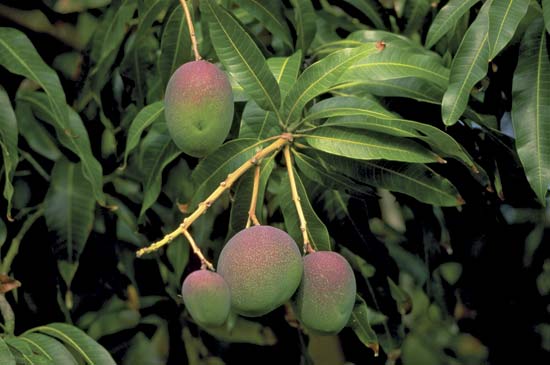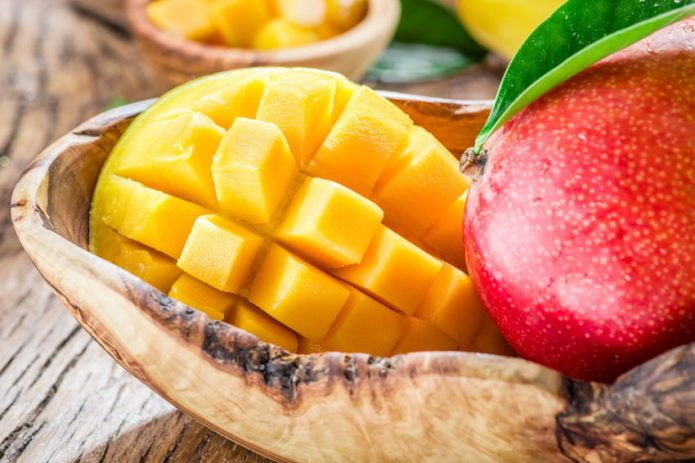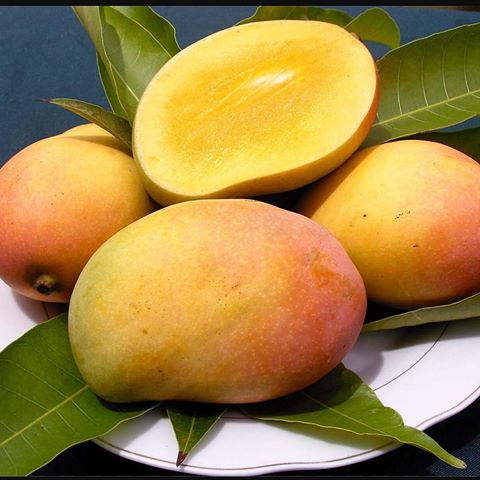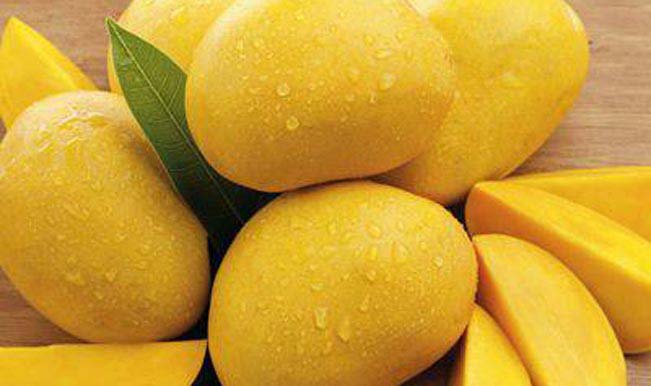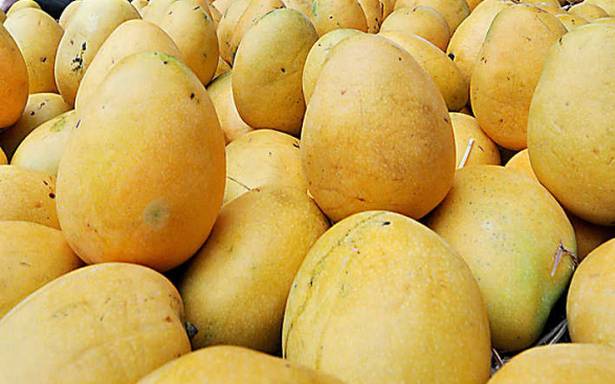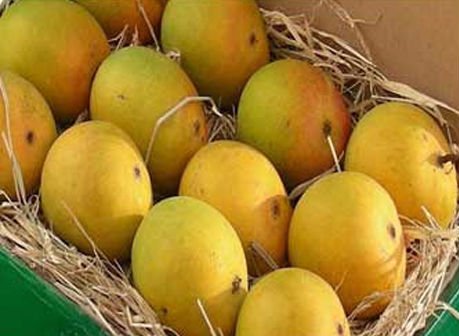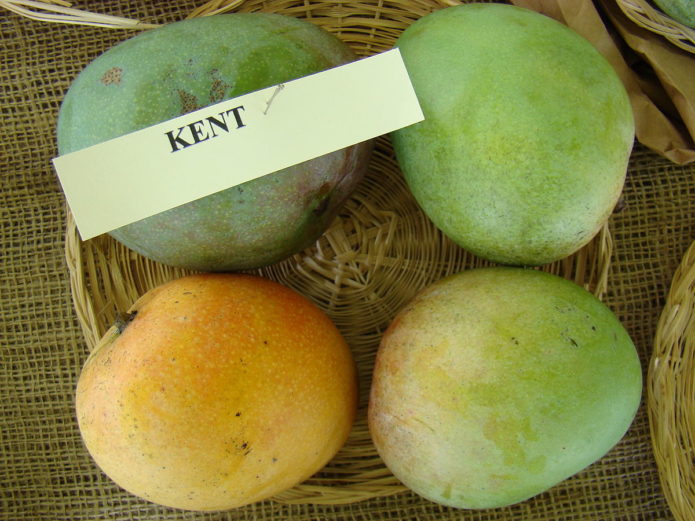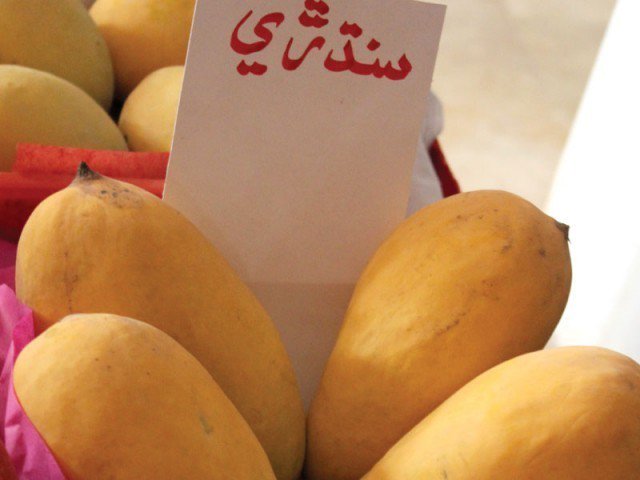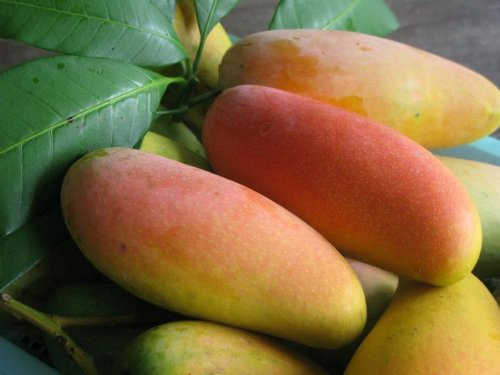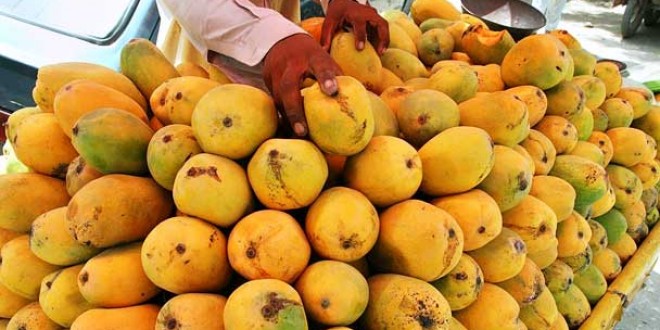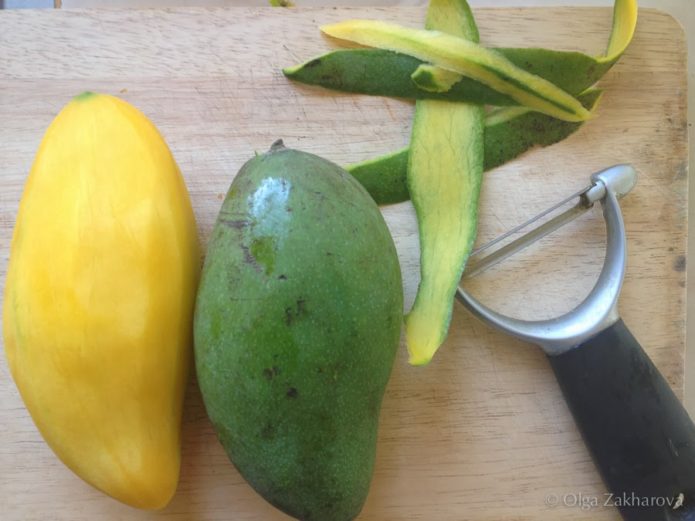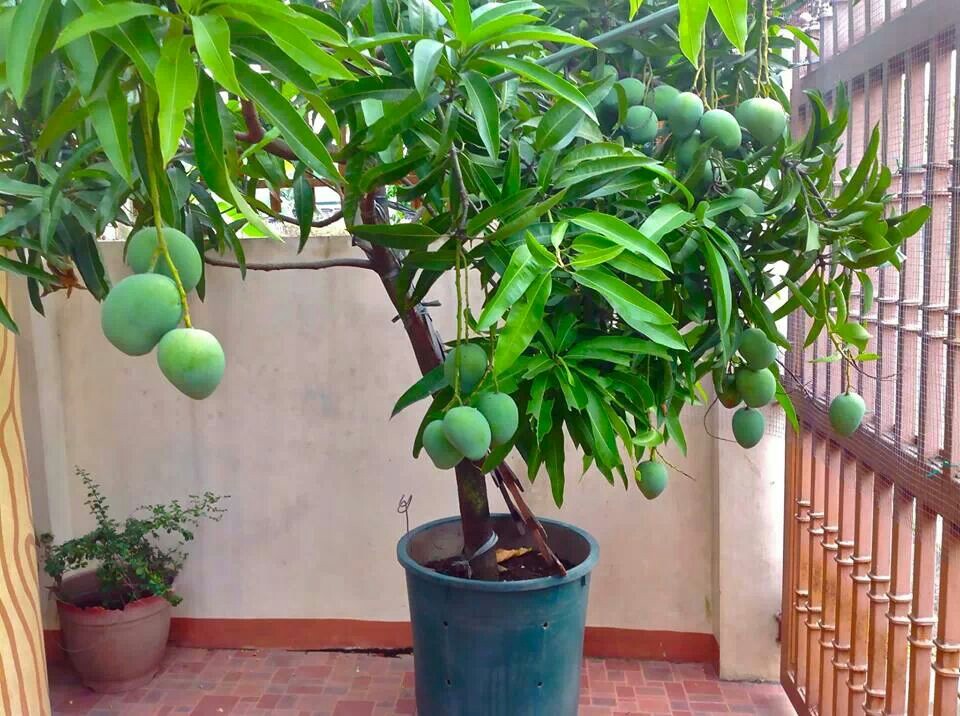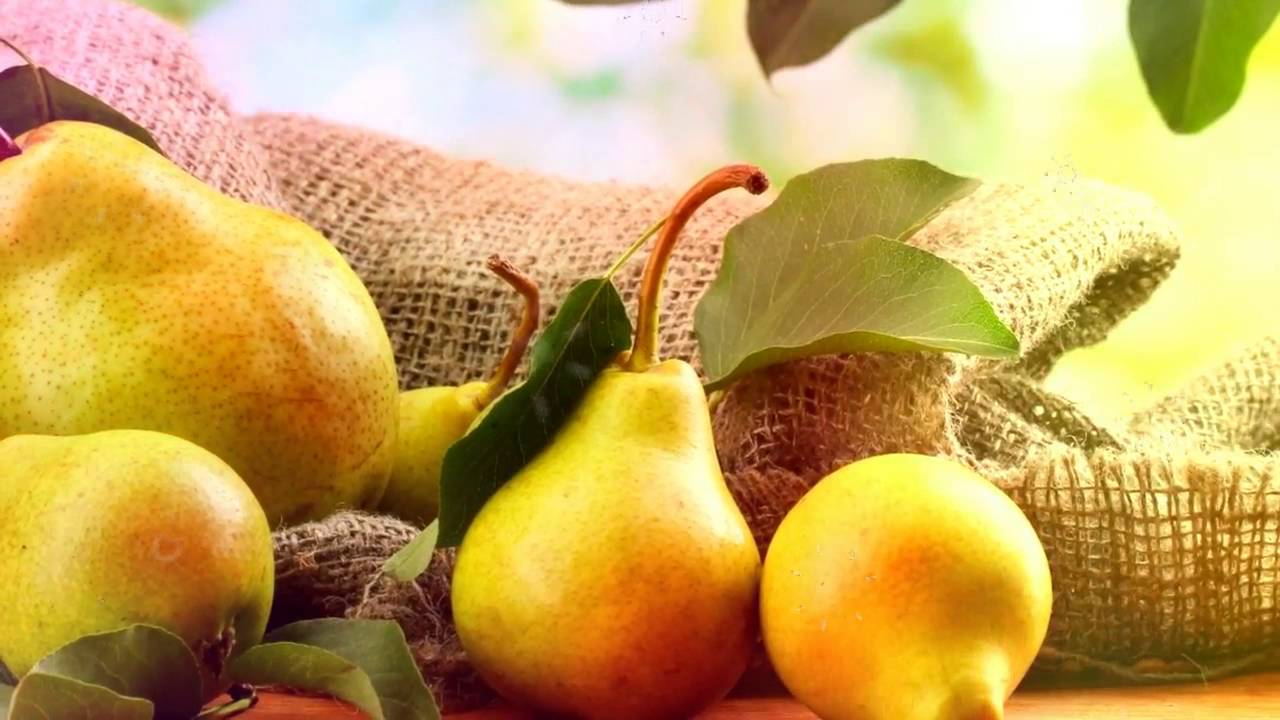Mango is a fruit with incredibly aromatic, tender and sweet pulp. It is grown in India, Thailand, Pakistan, Mexico, USA, Spain and Australia. Many varieties of mango have been developed, differing in fruit size, shape, taste and color. It is not for nothing that mango is called the king of fruits: ripe fruits are eaten as a dessert, a lot of dishes are prepared from them, adding to salads, serving as a side dish for meat and processing them into juice.
Content
Botanical description of mango
The mango is an evergreen tree that grows to 15–18 m in height. Leaves are simple lanceolate, up to 30 cm long. Flowers - small, pinkish and fragrant - are collected in large panicles. Fruits vary greatly in size and appearance - they come in oval, round, heart-shaped and elongated shapes. The smallest mangoes do not exceed the size of a plum, while others can weigh between 1.8 and 2.3 kg. Some varieties are brightly colored in shades of red and yellow, while others are dull green. Each fruit contains one large seed, and the surrounding pulp is yellow or orange, juicy and has a characteristic sweet and spicy aroma.
Mango season
Ripening of mango occurs in different months. It depends on the country in which the plant is cultivated. For example, the most delicious and fragrant fruits can be tasted in Thailand in spring, in Vietnam in winter, and in Indonesia and Bali, mango begins to bear fruit in October and ends by midwinter.
Useful properties of the fruit
Mango fruits include amino acids, carbohydrates, fatty and organic acids, minerals and vitamins. One fruit is 82% water and contains 66 kcal per 100 g.
Ripe mangoes contain moderate levels of vitamin C, but are quite rich in provitamin A and vitamins B1 and B2. There is as much vitamin A in the pulp as in vegetable oil. 100 g of raw mango provides 765 mg, or 25% of the recommended daily level of vitamin A, which is important for vision and bones.
Unripe fruits contain a lot of starch, which changes into sugar as the mango ripens. During ripening, the fruit is initially sour, astringent and rich in ascorbic acid (vitamin C).
Mango is also an excellent source of dietary fiber, flavonoids, beta carotene and beta cryptoxanthin.
Video: mango is the king of fruits
Common varieties of mango
There are several hundred varieties of mango in the world, but not all of them are equally common. The most popular are 35 varieties with high taste and useful properties, differing in the shape and size of the fruit, as well as the texture, taste and aroma of the pulp.
Alphonso
It is one of the best and most expensive mangoes found in India (mainly cultivated in the states of Maharashtra, Gujarat and Karnataka).The creamy texture of the pulp is considered one of the most popular varieties in the world. The fruit itself is hard and dense, but in the mouth the pulp just melts. Alfonso's taste is sweet with a light saffron aroma. The weight of one mango is 150–300 g. The season is short, the harvest is harvested from the end of March to May.
Kesar
Cultivated in Gujarat, India. The harvesting season for this mango variety lasts from mid-June to July. The fruit is a true masterpiece with the perfect combination of sweetness, acidity and a magical aroma that spreads everywhere. Although the appearance of the Kesar mango is usually nondescript, small and round, with a skin covered with yellow spots, all this is offset by a magnificent bright yellow flesh with a smooth texture.
Banganapalli
This variety is also grown in India, Chennai state. The shape of the fruit is elongated. The pulp is moderately juicy, without fibers, sweet. The fruit has a flimsy, golden-yellow edible skin. These mangoes are quite large, weighing up to 400 grams.
Dasheri
The variety is grown in parts of northern India. Legend has it that the first tree of this variety appeared thanks to a merchant who, during a quarrel with a monk, in a rage, threw the ripe mango to the ground, and a tree has been standing for 200 years in the place of the taken root, giving fertile offspring. This mango has the sweetest pulp with exquisite taste and delicious aroma.
Kent
It was bred in southern Florida and Miami and is considered one of the best. The excellent quality and transportability of the fruit, as well as the resistance to disease, made the Kent mango popular all over the world. The fruit pulp has an exquisite texture with a minimum amount of fiber and incredible taste. The usual color of the fruit is green with a beautiful red blush. High yields and long fruiting times are additional benefits. The harvest time is from June to September.
Sindhri
Sindri is the national fruit of Pakistan, mainly grown in the Sindh province. The harvest season starts in June and ends in July. One of the key features of this variety is the exceptional sweetness of the fruit, thanks to which it is popularly called honey mango. The fruit is elongated, slightly crooked. The color is uniform, without spots on the skin. The pulp is extremely soft, for this reason Sindri mango cannot be stored for a long time: it must be consumed within 2-3 days after purchase.
Mahachanok (MahaChanok)
Makhachanok is a mango variety cultivated in Thailand. It is most often found in Russian stores selling exotic fruits. Ripe fruits have a characteristic mango flavor and juicy pulp. The shape is oblong, the average weight is 250–350 g. The skin is smooth and thick.
Langra
The variety is very common in North India. Mainly grown in Bihar, Uttar Pradesh, Haryana and West Bengal. It is a short-season fruit, and the mango ripens from mid to late July. The fruit has an original wonderful taste, and the pulp just melts in your mouth.
Chausa
Chausa grows in Pakistan and northern India. Ripe mangoes of this variety are harvested from early June to late August. The fruit is sweet in taste, with a unique aroma. The pulp is very soft with minimal fiber.
Neelam
This is one of the varieties that grows all over India and Pakistan. Very harvestable. Mango Neelam appears on the market from May to the end of June. It is undoubtedly one of the best varieties in the world.The fruit is small, with a tiny seed and a pronounced floral aroma.
Gulab Khas
The mango of this variety is distinguished by a reddish flesh with a wonderful rose aroma. The skin is colored in a light yellow tone. The variety is good for making mango-based desserts.
Green mango
Green mango is not at all an unripe fruit (although in Asian countries they are also often eaten), it tastes similar to classic yellow mangoes. Its distinctive features are green skin and bright yellow or orange flesh. Several varieties of fruit are grown in Thailand. Among them are:
- Ok Rhong (oval fruits, light yellow flesh);
- Keo-Sa-Woei (dark green skin, oblong fruit shape, pale yellow and sweet flesh);
- Fralan (small fruits weighing about 150 g. Very tasty. Feature - characteristic pointed "nose");
- Gaew Lek (fruits are small, ripe and soft, weight 150-200 g. Skin is bright green).
Video: 4 varieties of mango
Mango is a great fruit with undeniable virtues. Delicate and juicy pulp has a sweet taste. The fruit contains a huge amount of trace elements and vitamins, therefore mango is recommended for dietary nutrition.
